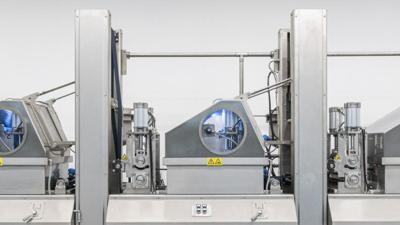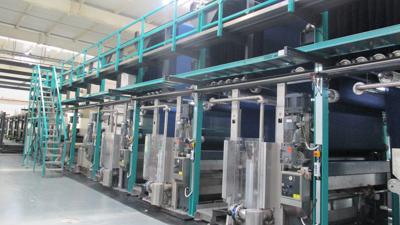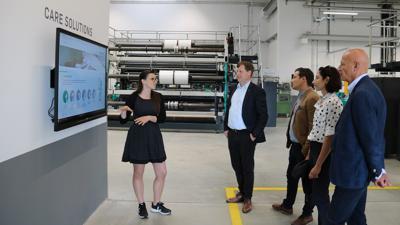Karl Mayer
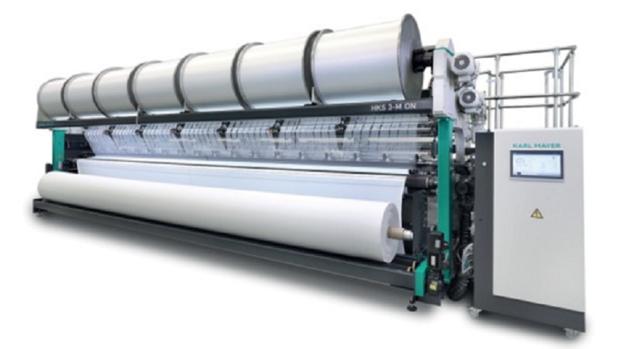
(Source: Karl Mayer)
Warp knitting technology is one of the most efficient surface forming processes in the textile industry, and also shows advantages over weaving in terms of environmental impact.
The warp knitting machine manufacturer Karl Mayer Group, Obertshausen/Germany, arranged for a comparative energy consumption study comparing the technologies of weaving and warp knitting to be carried out by the independent consulting company Gherzi Textil Organisation AG, Zurich/Switzerland. The study shows that warp knitting consumes considerably less energy than weaving. The potential savings in electricity are not only remarkable in terms of CO2 emissions but are also a cost advantage in view of rising energy prices.
Study: Weaving and warp knitting compared
The study focused on warp preparation, the actual surface production as the main process, and the design of the production environment required for this in terms of humidification, air conditioning and lighting. In the weaving mill, sizing, which is usually indispensable, was also taken into account.
In the main process, the focus was on the use of electricity to drive motors and to generate air and water flows for the weaving machines.
Energy consumption data came from different textile companies. In addition, textile machinery manufacturers provided input from internal performance measurements.
From the data, the amount of energy required per m2 was determined for the comparison.
For the study, 4 product categories that are representative of both technologies were selected. These were terry fabrics made of cotton, and linings, curtains and trouser fabrics each made of polyester (PET) or polyamide (PA).
Subsequently, the consumption data for the production of warp knitted and woven articles with comparable fabric parameters were examined for each category. The warp knitted fabrics were produced on 2 and 3-bar high-performance tricot machines and basic warp knitting machines with 3 and 4 guide bars. Water jet and air-jet weaving machines were used in the weaving mill. All machines were no more than 10 years old.
For warp preparation, fabric production and setting of the ambient parameters, significantly less electricity is required overall in the warp knitting mill than in the weaving mill. This applies to all product categories.
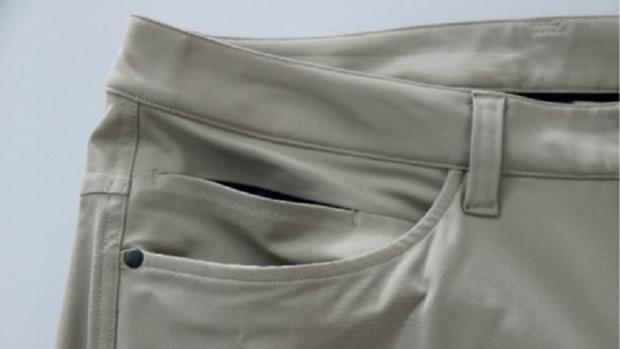
(Source: Karl Mayer)
Particularly large differences can be seen in the energy expenditures for the main process, i.e. for pure machine operation. These are particularly well suited for technology comparison, as they are independent of location and therefore the same in all countries.In terms of product groups, the advantage of warp knitting over weaving is greatest in the production of trouser fabrics. For the production of apparel textiles, warp knitting machines require only about one tenth of the energy consumed by weaving machines. In absolute terms, the potential electricity saving is 0.57 kWh/m2.
The positive effects on the environmental balance sheet, but also on the cost balance sheet, can best be illustrated by an example. An Indian company with 400 air-jet weaving machines and an average daily production of around 134,000 m2 of these textiles can reduce its CO2 emissions by around 55 tons/day by switching technology to warp knitting – with CO2 emissions of 725 g/kWh in India in 2019 [1]. Coal-fired power generation dominates the country's energy mix.
In addition to less environmental impact, there are also lower electricity costs. At a price of US$ 0.104/kWh at the end of 2021, the savings potential is around $ 8,000/day. Today, this amount is likely to be much higher [2].
In addition, the previous output can be achieved with far fewer machines. With a 14-fold increase in daily production, 27 warp knitting machines can replace the previous 400 looms [3]. A smaller machinery fleet requires less space and personnel. These are also significant advantages.
References
[1] https://iea.blob.core.windows.net/assets/e4945633-ab7c-45cc-8e3a-aa74dd3de962/AirQualityandClimatePolicyIntegrationinIndia-Frameworkstodeliverco-benefits.pdf
[2] https://de.globalpetrolprices.com/India/electricity_prices/
[3] Gherzi: Compare conversion cost (mainly power related) of weaving and warp knitting, study for Karl Mayer, February 24, 2022
This Article was published in melliand International 6/2022

